Quoting the famous New York Times article headline “Frog of the Railroad to Become Prince of the Park”.Travelling through yesteryear’s rail links and connecting people today, let’s take a brief glimpse into the flexible urban project that is changing the norms of city landscaping.
In New York, the urban neighbourhood rejoices in the deco adornments on each avenue and street. The elevated addition to the city tapestry is the High Line. It is the rebirth of a historic railway line and the endeavour to breathe new life into it in the very heart of Manhattan.
History of High Line
In the mid-1800s, 10th Avenue of Manhattan was called ‘The Death Avenue’, with the loss of lives of many pedestrians by trains. Around 1924, the West Side Improvement Project began in the city, wherein the transit commission stated the redundancy of the street-level crossings. It was followed by the dismantling of tracks and the creation of an elevated railway line—the High Line, as it is called now. The train line was fully operational by 1934, cutting through buildings and giving access to nearby factories, like Nabisco (now Chelsea Market). Between 1960 and 1980, trains were less in use as new trucks were deployed on the streets. This led to the demolition of some of the sections of the railway line, and finally, in 1980, the total demolition of the structure.
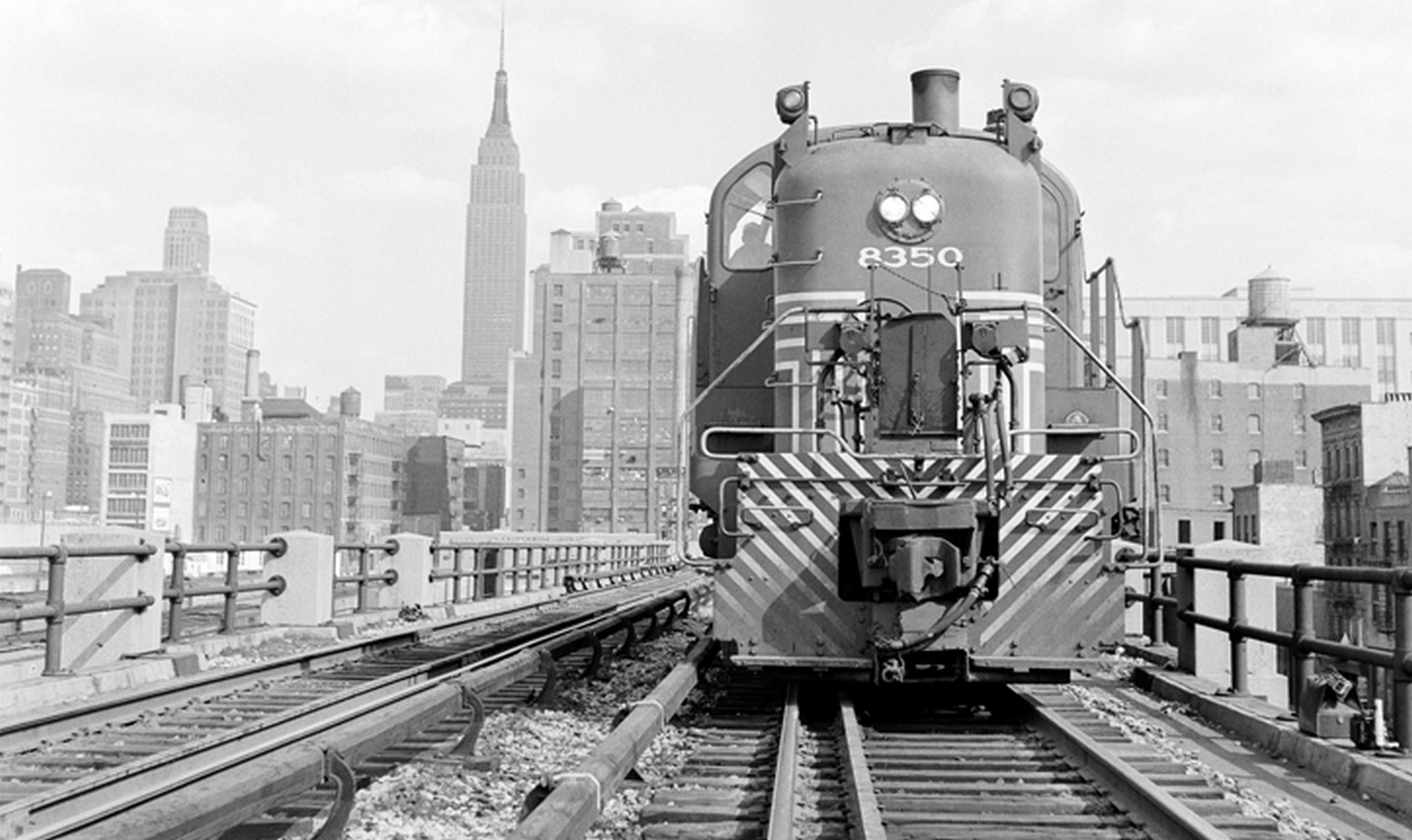
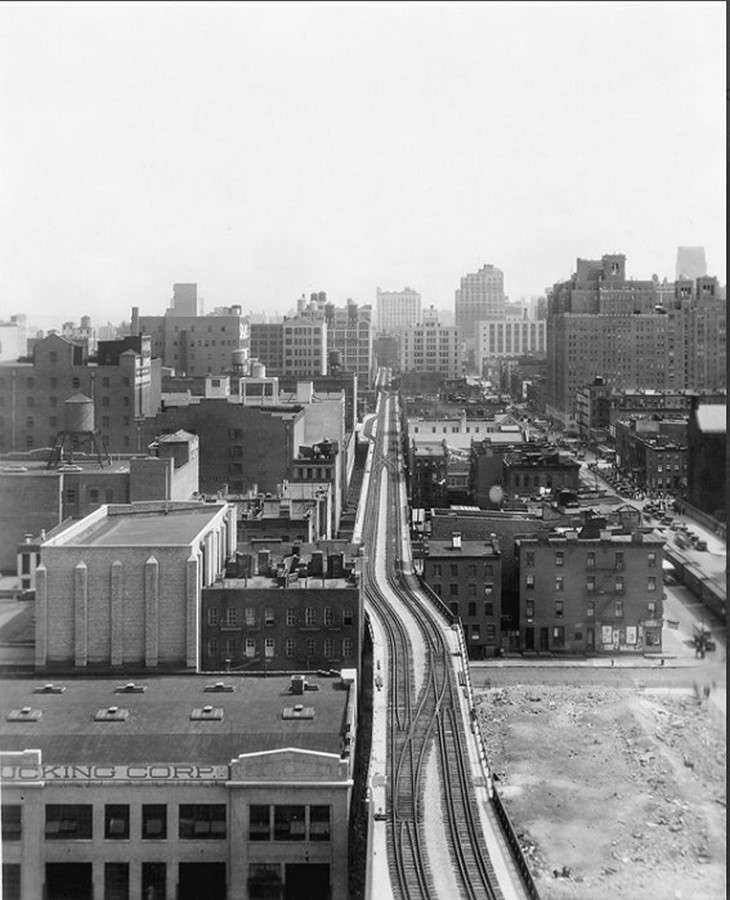
In line with the passing of the Act of Trail System by Congress, reusing the High Line as a structure for other purposes stemmed simultaneously. By this time, High Line had already seen many demolitions, like running down the 5 blocks from the Bank of Gansevoort and turning a warehouse into a building complex. Amongst all this, the heads turned towards a wild plantation growth, seemingly taking over the non-operational lines. Joshua David and Robert Hammond came up with the non-profit conservancy team, Friends of the High Line. From 2004 to 2006, the mayor of Bloomberg and the City Council proposed turning the place into a special zone area as a public park. It was then known to be the West Chelsea Special District.
Reusing the structure as a New- Design and construction
Gracing the concrete jungle with pride, the High Line is now a conduit for metropolitan life. Amidst the towering spirality of the city, this reused area provides the missing puzzle piece for the cultural valley. The design of this link undertook a lot of ideas anchored by the crème de la crème of architecture and design through various idea and design competitions that took place during 2003 and 2004. Frameworks for visionary and futuristic designs were selected, namely James Corner Field Operations, Diller Scofidio + Renfro, and Piet Oudolf Zaha Hadid Architects, which collaborated with Balmori Associates, Skidmore, Owings & Merrill LLP, and studio MDA on the design. Steven Holl Architects collaborated with Hargreaves Associates and HNTB on this project. Michael Van Valkenburgh Associates collaborated with D.I.R.T. Studio and Beyer Blinder Belle on Terra GRAMME.
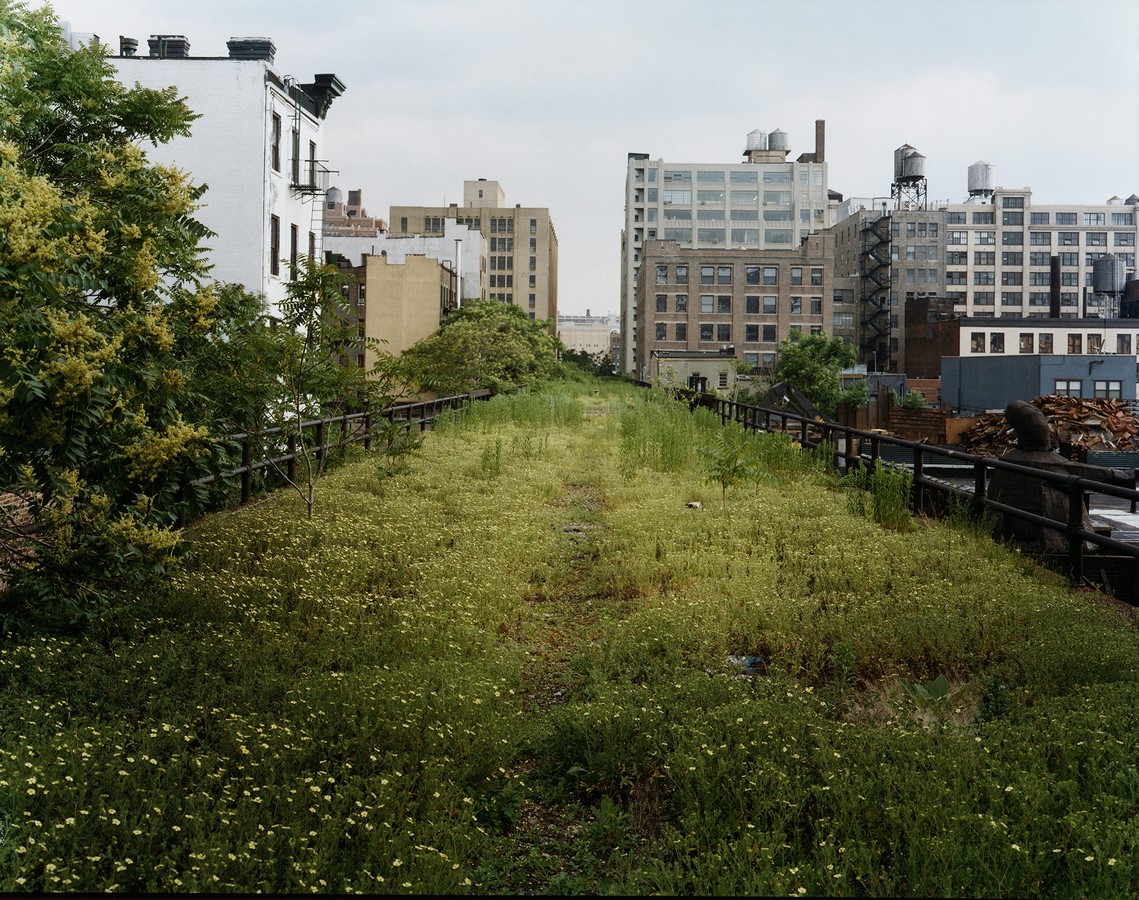
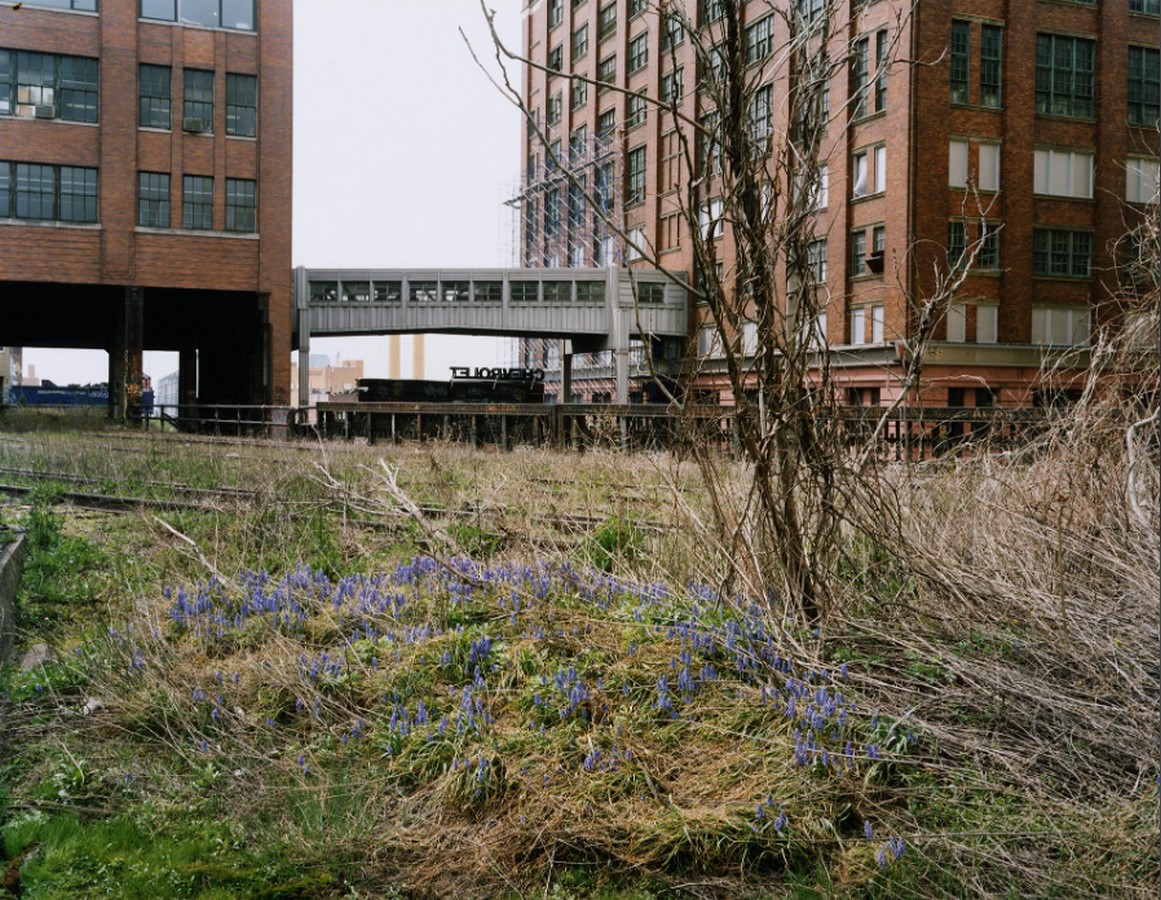
The site needed more of everything existing on the structure, from railway tracks, gravel, ballast, and debris, along with lamina of concrete. Certain sections of the tracks were surveyed, relocated, and stored. To recreate the historical surroundings of the antiques, many artefacts were integrated into the locale’s canvas. The steel elements were sandblasted to remove the existing paint and refurbished with fresh paint. Waterlogging and some concrete repairs were put in place. Enhancing the structurally strong was just appropriate and didn’t ‘cross lines’ when it came to meddling with the originality. The place carries freight of its own! Some additions also included the pathways created from the precast concrete pavers, with planks laid off into an array of pedestal bolsters. The irrigation and electrical connectivity beneath it just make it seamless and not a patchy job. Escaliers run where the old steel girders once supported the structure so that they pass through the construction of the High Line itself. Grand illumination of the walkways and shedding some spotlight on them is done by decorating LED lights throughout.
Featured Spots of the High Line
The High Line in Manhattan serves as a modern, futuristic destination for visitors, offering spots and sights on view as one walks along. As one passes through the rail of views, the most evident views are of the Tiffany & Co. Foundation Overlook and Gansevoort Woodland. To the east of the Whitney Museum of Art, the High Line was severed to make up space for residences. Now the severed part of the High Line is made into a public park. About 13th Street and Gansevoort Street surround Woodland, Donald Pels, and Wendy Keys Gansevoort, the vines over the railway lines create a blanket visibly comforting to the onlookers. To the north, an edgy and minimal glass building, Standard High Line, makes its way along with the last meatpacking facility, a red brick structure below the street. A bunch of art-curated movies are cast every evening in the semi-dark enclosed tunnel at a section between 14th and 15th streets.
Diller von Furstenberg owns a fresh and breezy water feature and an amazing sundeck. It is an intended feature, as it is the same place where water accumulated at the once-deserted High Line. The Chelsea Market passage between 15th Street and 16th Street (the former location for the National Biscuit Company, Nabisco) is home to the great Oreo cookie production. It utilised the tunnel for flour transportation. Reflecting the botanical past of the high line, a reserved branch crosses 10th Avenue on 16th Street, connecting the old merchants’ refrigeration warehouse, which is the Northern Spur reserve. At 17th Street, it introduces a square and overlooks 10th Avenue; steel beams of the original High Line are kept intact, and the framework makes a square window down to the street. It has a disabled-person-friendly amphitheatre for cultural dialogue and inclusivity.
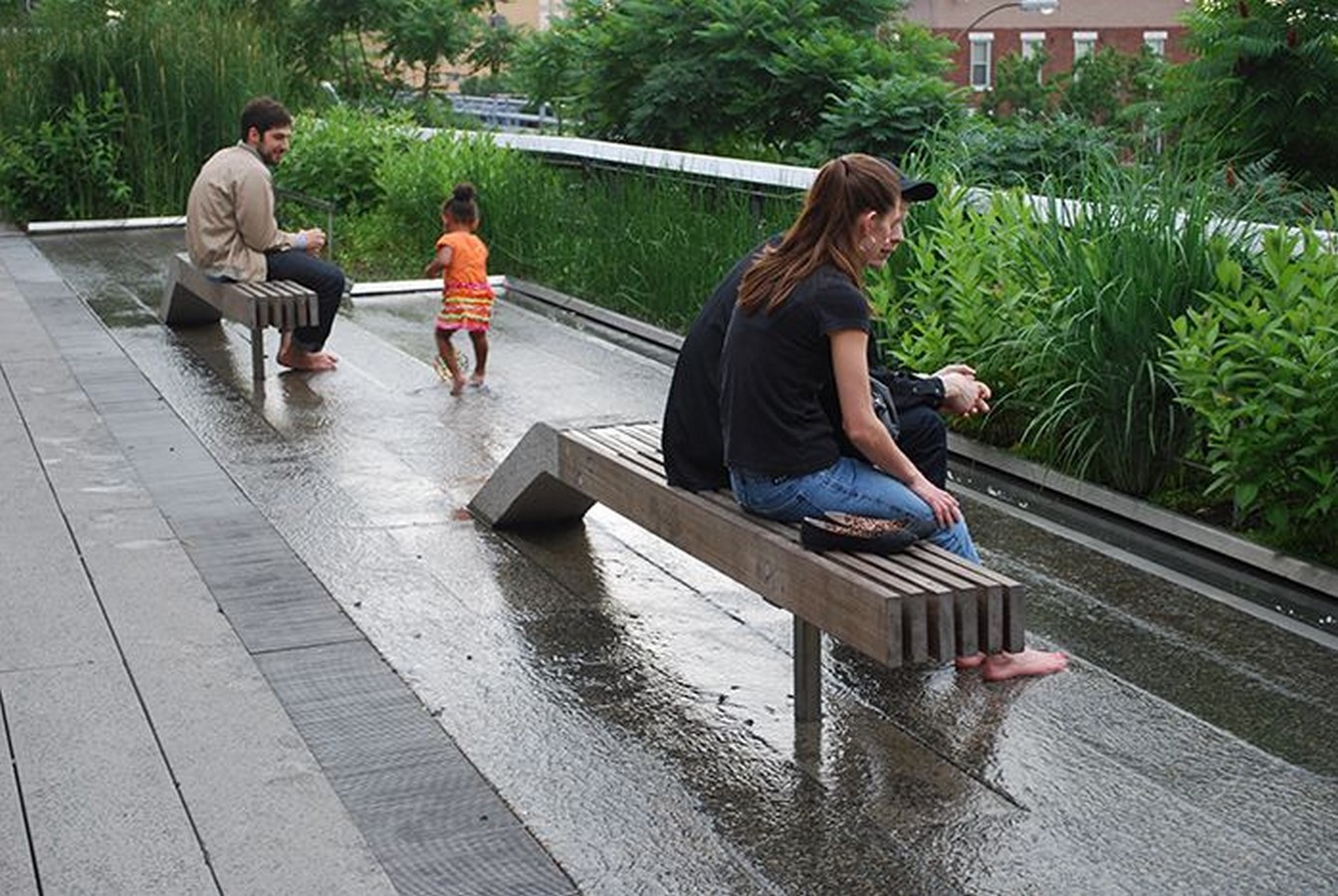
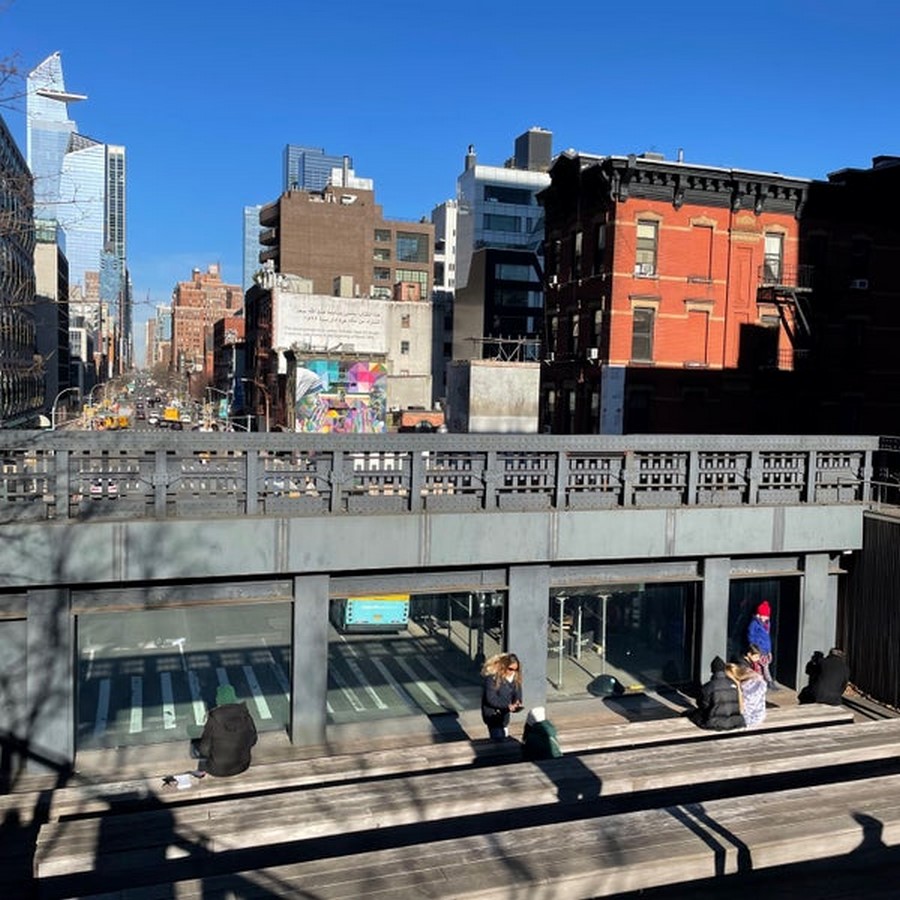
The most outstanding feature, weaving threads of the past and present, is the Chelsea thicket, where old steel train rails run beside the walkway amidst trees of dogwoods, bottlebrush, buckeye hollies, and some other varieties of thick shrubs. A recycled, teak-seating arrangement at 22nd Street is for all picnic enjoyers and for exhibiting the yearly painting. Between the 25th and 26th streets, a flyover rising about 8 feet up close with treetops creates a microcosm in the park. Bigleaf magnolia and scented sassafras grow in the park, adding a biosphere of their own.
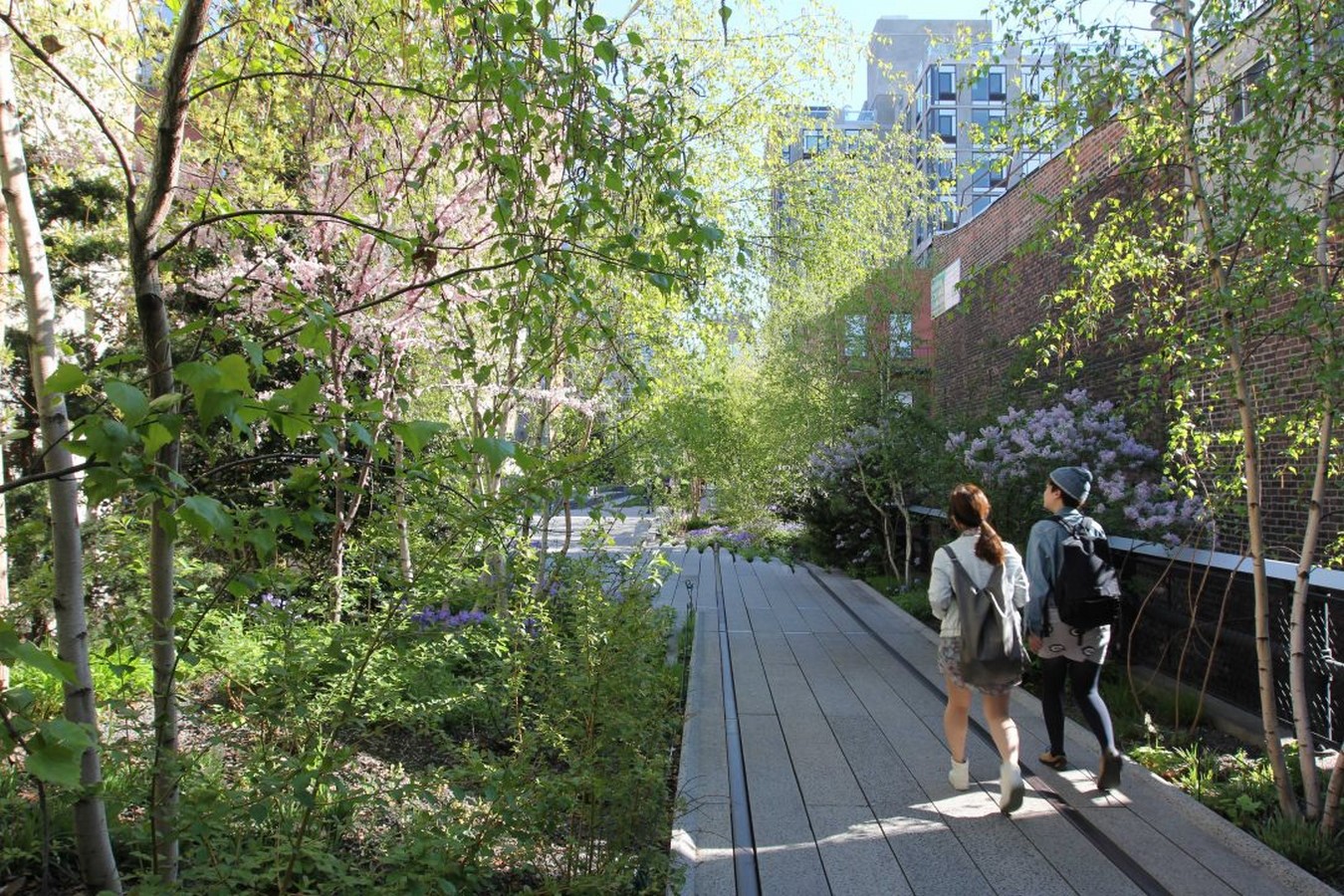
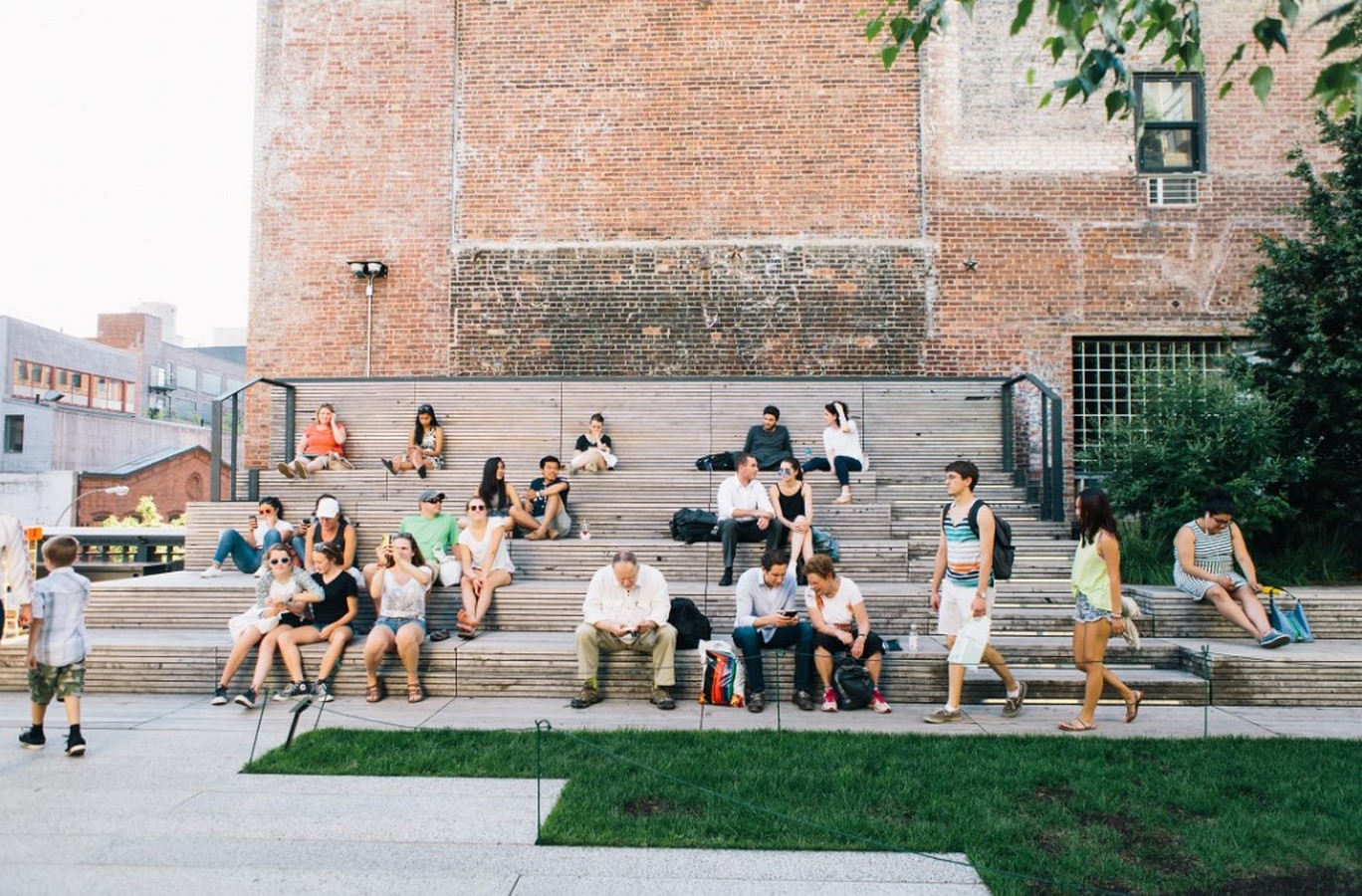
The main feature of the High Line is the Spur. It has an outdoor meeting area, the coach passage, and the High Line plinth. The Spur is that area of the original rail line that is converted into a public place at 30th Street and 10th Avenue. The Interim Walkway is a landscape of self-seeded plants, offering 360-degree views of the Hudson River and the city. The Walking Path Interim celebrates the plantation that thrived wild on the tracks after the line ceased to operate. It is a self-seeded plant community running between 30th and 34th Streets. A spectacular panorama without obstructive views of the city and Hudson River awaits there. The interim walkways then enter the city, a place where the High Line falls to the street.
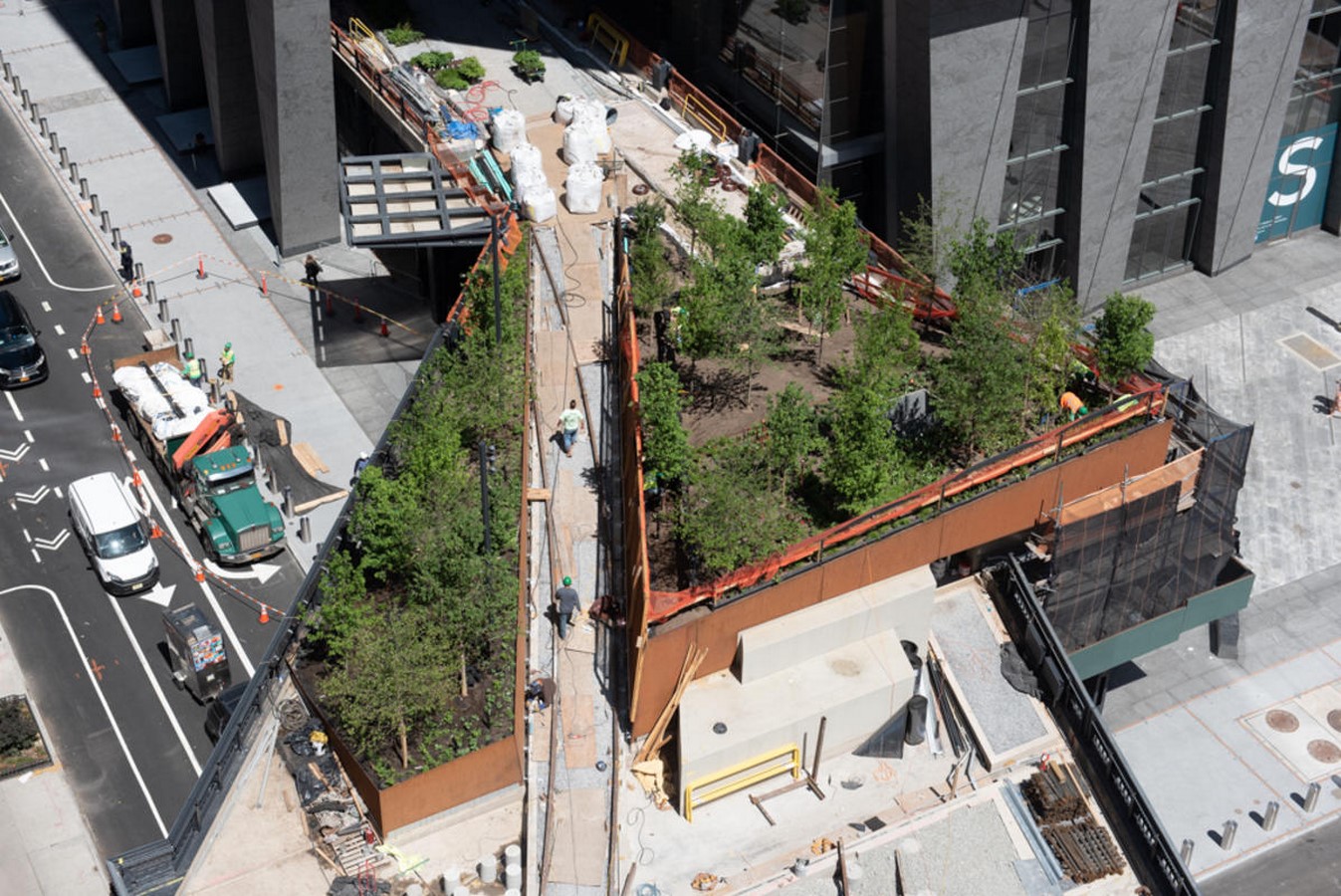
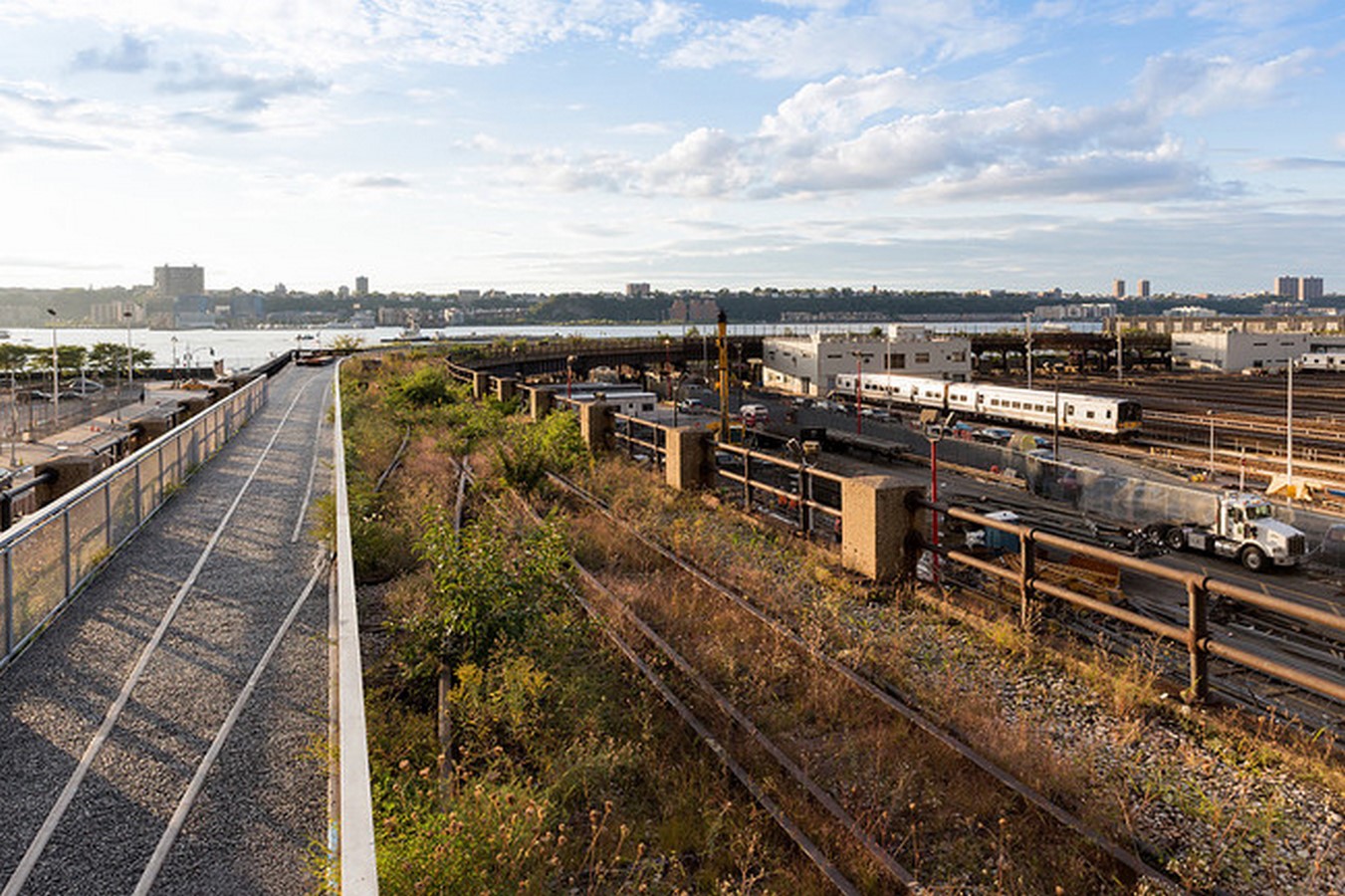
High Line Art
High Line Art was founded in 2009 and keeps up with the annual tradition of keeping contemporary artworks on display. The railyards opened with a temporary walkway in 2011. The Save the Spur initiative took a surge to preserve the last remaining section of the rail line. In 2023, the Moynihan connector opened to this space. It links with the High Line, cuts the Spur, moves east along 30th Street, and turns 90 degrees north along Dyer Avenue. It finally opens to Manhattan West with Brookfield Properties, which is a mixed-use development. New Path allows visitors to access transit amenities and the west side of Manhattan by just crossing the street.
The High Line sees new artworks commissioned every year for display for around 365 days. Murals, sculptures, and installations adorn the walkways. The Plinth was opened in 2019, and it is the first space on the High Line dedicated to the yearly changing series of cutting-edge and new contemporary art pieces. This revamped rail line is now a central cultural identity for some recreational areas for citizens and a growing tourist spot.

High Line Today: Accolades and Critique
A dynamic shift in the art and culture segment, along with sustainable and futuristic architectural design The High Line has found its niche in the reuse and urban regeneration design communities. It stands true to its ethos, which was the decisive factor in its planning and execution. However, as they say, ‘Where there is light, there ought to be shadow’, The High Line in recent years has been a topic of criticism. Increased urban demands led to the gentrification of the area, with the sailing boat ferry of inclusivity and equality floating over it. The question here thus becomes: if it is by the people and for the people, there shouldn’t exist such demarcations. Overcrowding during peak visiting hours is making it a less enjoyable space for both tourists and locals. Inordinate commercialization with shops and restaurants contrasts highly with the community-focused space. Maintaining such a big structure itself requires and involves high costs, which, many think, can be foregone to support other necessary civic amenities and projects. Another factor that has arisen is the loss of cultural authenticity over time. For now, it caters to more tourists than city dwellers.
Conclusion
In all this commotion and word-of-mouth buzz, what lies relevant is the question of it being a cultural zone and an urban redevelopment project at the same time. When the project came into existence, it was the public ideas that were considered first. It is necessary for this question to be left to the public alone and not to critics of all kinds. After all, the park is a space of self-reflection in the city; one shall dwell within the concreteness of its existence!
References
- Friends of The High Line (2023) History, The High Line. Available at: https://www.thehighline.org/history/ (Accessed: 06 October 2023).
- Friends of The High Line (2023a) Design, The High Line. Available at: https://www.thehighline.org/design/ (Accessed: 06 October 2023).
- Friends of The High Line (2023a) Park-Features, The High Line. Available at: https://www.thehighline.org/park-features/ (Accessed: 06 October 2023).






















